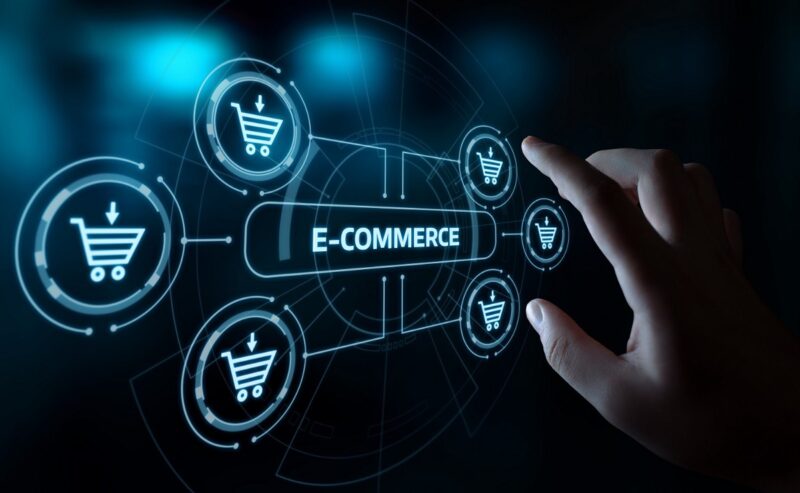A hybrid e-commerce platform gives businesses a single dashboard with shared data, product information, content, and design layout to effectively execute sales techniques across numerous regions. Instead of starting from scratch, enterprises may swap platforms, configure products, and sell.
More than ever, it’s critical for companies to prioritize meeting customers’ expectations. Market needs are always shifting; therefore, you must be prepared to adapt to digital technology and new ideas. However, only a small percentage of people achieve success.
Page Contents
Why Hybrid E-commerce is Better?
Hybrid e-commerce is advantageous since it helps businesses reach a wider market and generate more income without committing extensive efforts to develop an altogether new brand. It also works faster and much simpler than typical e-commerce platforms.
Here are some of the major benefits of Hybrid E-commerce:
- Quicker and easier purchasing
- Putting together a shop and catalog of goods
- Saving money
- Advertising and marketing that is affordable
- Ability to modify services in response to specific client’s needs
Foster Closer Ties
Companies that previously sold to other businesses might get valuable insight into their clients’ characteristics by diving into the consumer market. Relationships with consumers and their data may help business-to-business (B2B) enterprises better serve their clients superior goods.
In terms of a commerce platform that enables businesses to scale and grow, Core Dna was made to accommodate the needs of programmers and business people. They provide programmers access to the most adaptable platform while giving marketers easy-to-use tools for taking command of their digital possessions.
Multi-user Interface

Since business-to-business and business-to-consumer transactions differ in several ways, including pricing and purchase volume, having a consistent user interface for both is not feasible. The hybrid e-commerce platform overcomes this difficulty by independently delivering a multi-user interface for various categories.
Generally, the multi-user interface permits presenting the same product on two separate business configurations, making the process efficient and error-free.
Single Data Base
The hybrid E-commerce platform’s two markets can now be controlled in a single solution using a unified database. It improves business efficiency and agility at a lower cost to management and administration.
Faster and More Affordable Scaling
In e-commerce, rapid expansion is possible without starting from scratch. To illustrate, a business that sells directly to consumers online but wants to branch out into wholesale need not spend any more money developing a new line of merchandise. Expanding into untapped areas may boost their income potential without investing in new items.
Many well-known companies across markets provide wholesale (B2B) and retail (C2C) sales channels for their wares (B2C).
Economical
Time efficiency is a significant advantage of a hybrid e-commerce platform. The hybrid strategy helps you save time by reducing the work you would otherwise need to spend doing a single operation on each platform individually. It spends less money on labor as a whole.
Instead of maintaining two databases, two catalogs, and two sets of customized content dependent on the business process, a hybrid strategy consolidates these functions into a single location.
Business Optimization

When just one platform is managed, rather than two, the whole business model may be optimized. This is accomplished by controlling everything via a single system, which results in significant time and cost savings while providing a comprehensive perspective of the company’s performance.
It is always vital to examine and test how the two platforms might have synergy and combine them. Having two distinct platforms may work for certain firms, but it is always important to do so.
Simply switching the interface from business-to-consumer to business-to-business and vice versa will allow companies to obtain a competitive advantage over their rivals. This is done by rapidly advertising individualized versions of their goods, services, and brands to customers and clients.
Key Elements of a Hybrid E-Commerce
As e-commerce, including research and purchase, gets simpler for customers, it becomes more difficult for companies. E-commerce companies must now distinguish themselves with high-quality user experience, powerful online and social media performance, and engaging marketing techniques.
Order
Customers and businesses may benefit from real-time order optimization by entering SKUs and selecting the quantities they require with a price to save the time spent on phone calls. Businesses will be persuaded to purchase from the Marketplace because of the seamless, streamlined, and unified shopping experience offered via the same interface and payment providers.
Account Administration
Marketplaces and accounts will have unique and customizable features, such as various inventory and price structures, messages, promotions, B2-B or B2C-focused articles, etc. Yet, the company’s logo and mobile responsive design remain the same across all channels.
Controlling Stock Levels
When deciding on a hybrid e-commerce platform, it is crucial to have a centralized location from which you can easily monitor inventory levels. It is important to replace items for certain consumers or markets (B2B vs. B2C). This should make managing catalogs and stock easier for administrators by eliminating the need to keep track of various data sets.
Back-end Integration

Suppose companies want to keep customers interested in their products throughout the shopping experience. In that case, they need to ensure that their e-commerce platforms are responsive and operate without a hitch. With several alternatives, customers can quickly abandon a website that is slow to load or fails to fulfill a certain need.
In a market where customers’ time is important at every level of the purchasing experience, organizations that invest in back-end engineering will have a competitive advantage. When connected, inventory, credit card processing software, website content, and other back-end systems work better.
Digital Marketing
An effective digital marketing plan is a big project, and companies must treat it like any other e-commerce sector. SEO, social media, content marketing, and bulk SMS texting can help companies increase consumer awareness and engagement. SMS messages can be automated to send confirmations or promotional campaigns, to track information, or to remind clients of their abandoned carts.
This approach ensures that businesses of all shapes and sizes can provide the best possible customer experience, including implementing abandoned cart emails to encourage customers to complete their purchases. This way, businesses of all shapes and sizes can provide the best possible customer experience.
Conclusion
Businesses may benefit from a shared digital infrastructure by using a hybrid e-commerce platform that caters to business-to-consumer and business-to-business transactions. That’s why B2-B companies need to adopt customer service strategies similar to those of B2C firms. This is also true for B2C companies since they may serve the needs of B2-B customers.






